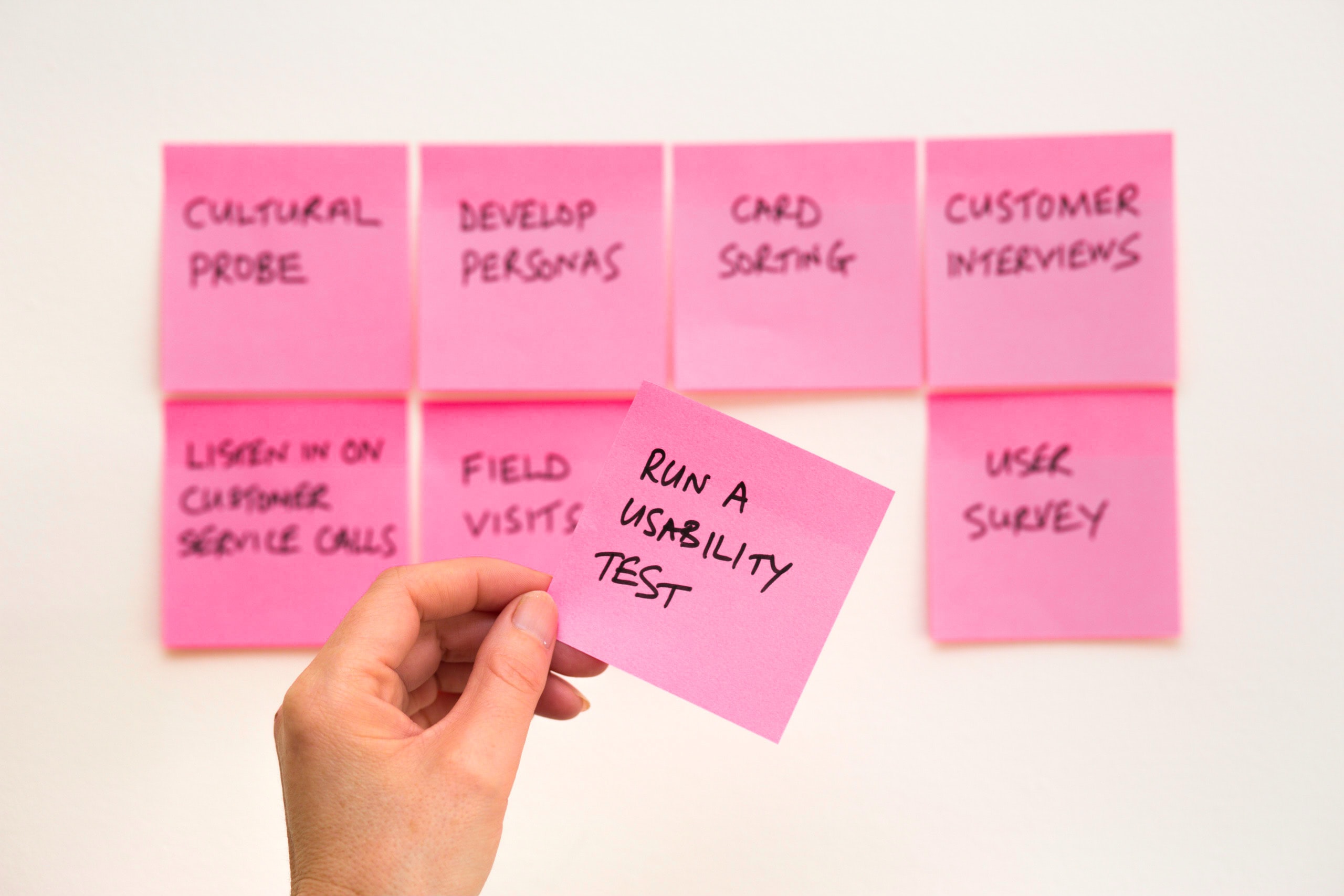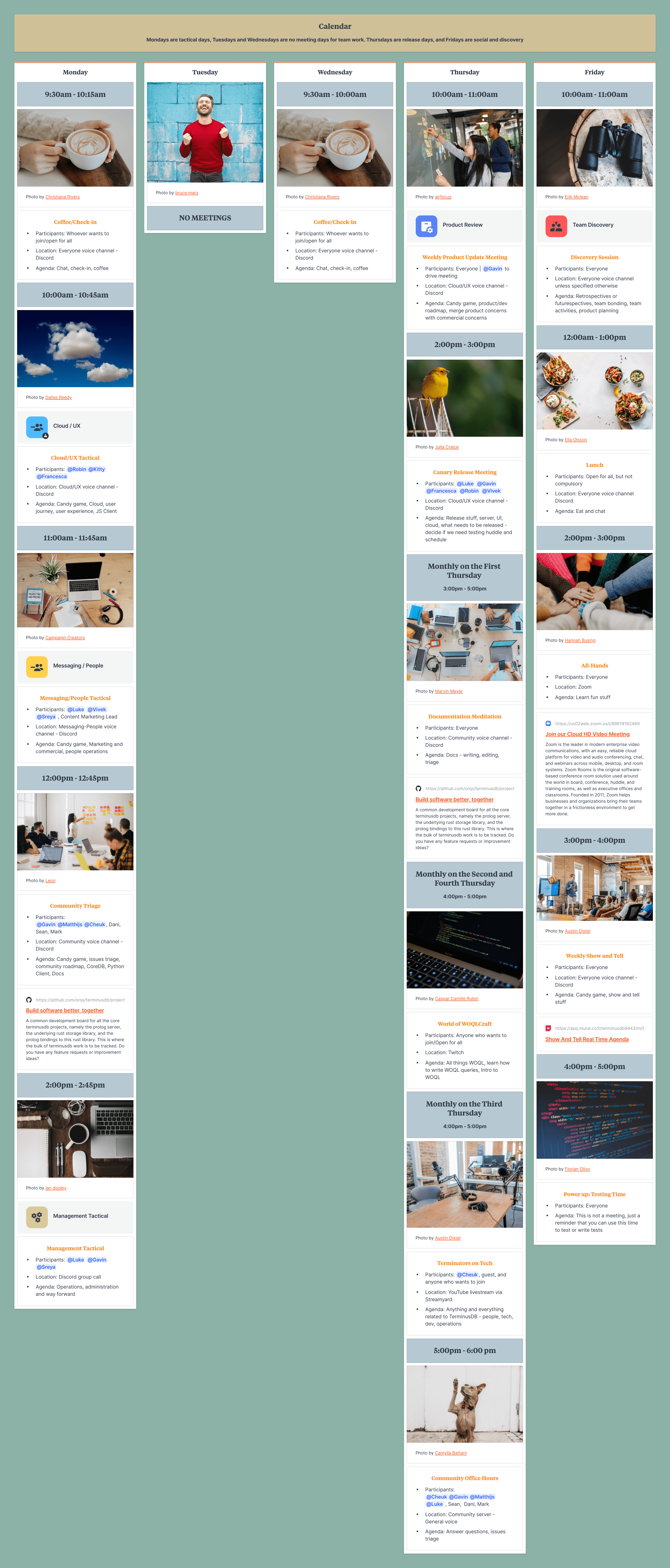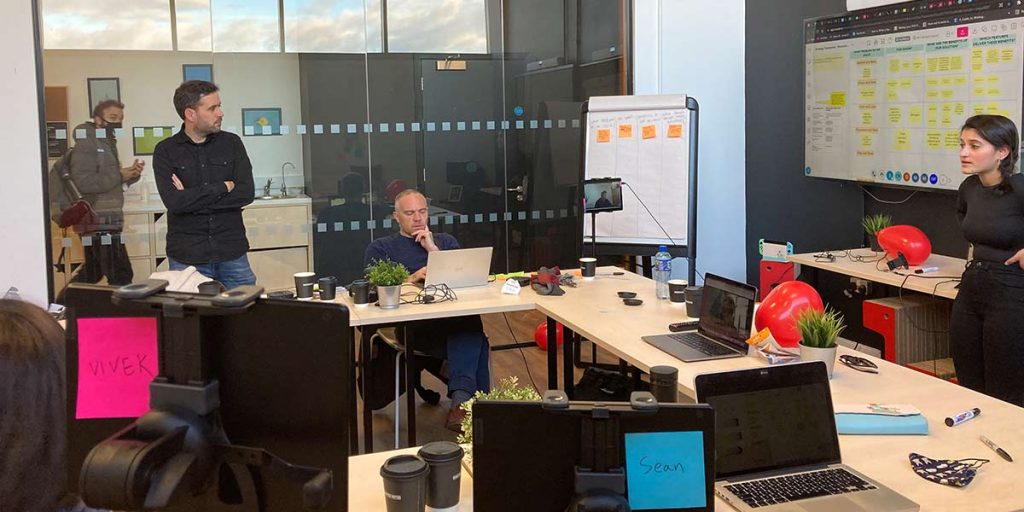‘That meeting could have been an email’ is precisely the kind of thing we want to avoid at TerminusDB. Meetings are great, but there’s also a lot of evil accompanied with them if not done well. How many meetings have you been part of that could have been an email? How many that went on for an hour when they could have been wrapped up in 20 minutes or less? How many that didn’t have an agenda and participants were left wondering why they were there in the first place? If there’s one thing we can be sure of when it comes to meetings, it’s this – meetings can be messy.
Really Remote – Now What?
They’re also, however, quite necessary – especially when you’re a remote first company like TerminusDB. When the world transitioned to remote, we were faced with the new challenge of collaborating remotely. Truth be told, it wasn’t entirely new to us. We were already a distributed team. We’d often travel for week-long company-wide workshops where we’d plan for our next release. We would then travel back to our respective places of work and begin to execute delivery. There was already a degree of remote working we were used to – but I don’t think we did it as well as we could have – probably because we always had the luxury of being able to travel and meet in person when necessary. When the pandemic hit, we no longer had that option. We had to meet the challenges of real remote working head on, and, more than a year and a half down the line, I’d say we’ve fared pretty well.
It’s taken us a while and a whole lot of trial and error to get to a point where we can – more or less – safely say that we’ve got a good meeting structure in place. Our first order of business when we started working remotely was to evaluate tools that would enable collaboration, communication, project management, and task tracking. In doing this, we also re-evaluated some of the tools we were already using. Slack – while great – just wasn’t working for us. If you’re part of the TerminusDB community, or if you follow us on social media or have seen any of our Terminators on Tech episodes, you know that we stan Discord. I’d go so far as to say that Discord is what has helped us come together and work better as a team than we did even back in non-remote times. It’s high praise, but it’s well deserved! Discord is our virtual office, and by virtue of being our office, it’s also where we have most of our internal meetings.
If you’re familiar with the platform, Discord allows for multiple voice channels in addition to text channels. The voice channel feature has been a god send for us. By enabling us to have meetings (and pair programming via screen share) over voice, we’ve been able to almost entirely eliminate the dreaded zoom fatigue. We have only one weekly meeting over Zoom.
We also started using Mural and Milanote. For the uninitiated, Mural is essentially a virtual whiteboard and is a tool that allows for real-time collaboration and planning. Think colorful sticky notes, images, icons, and diagrams. It isn’t as great as planning in person and sticking notes all over a wall, but we take what we can get! Milanote is what we use for roadmap tracking. It’s simple, visual, and easy to work with. We also like that it isn’t as rigid as the usual project or task tracking tools out there. It’s also a great tool for creating diagrams (architecture!) and plotting user journeys.
Once we had our arsenal of tools, we started to figure out meetings. We had some bumps along the way but have found what works for us at this point in time. At TerminusDB, Mondays are team tactical days, Thursdays are product focused, and Fridays are social and discovery days. Tuesdays and Wednesdays are meeting free for focused work.
Mondays aren’t so Manic here
We start our Mondays off with a virtual coffee hangout/check-in. We begin by playing a round of the candy game. Each week, I prepare a list of five questions. Each question is assigned a certain color, you ‘roll’ a dice on Discord and a dicebot gives you a color. You answer the question corresponding to that color. We also take turns to talk about our availability for the week. It’s important for us to do this because we work remotely, and are a fairly distributed team. Flexibility is crucial, as is knowing when someone may not be available for a particular reason.
We have three internal teams at TerminusDB. They are the Community team, the Cloud-UX team, and the Messaging-People team. Each team has a tactical meeting on Monday where they go over their roadmap and tasks that need to be focused on. Responsibilities in accordance with tasks and scope are assigned to respective members of the team. With a product such as ours, it would never be prudent to work in silos. Collaboration is essential to achieve greatness. You’ll often see people from a different team joining another team’s tactical. Tasks are also often cross-functional. We’re a company that values transparency and communication. As such, meetings on Discord are open to all.
Meeting without Meetings: Tuesday and Wednesday
Tuesdays and Wednesdays are meeting free save for a quick coffee and check-in on Wednesday morning. While these are meeting free days with respect to internal meetings, people may have of course scheduled meetings with external stakeholders. I’d also be remiss if I didn’t mention that just because internal meetings aren’t typically scheduled on these days, it doesn’t mean that people don’t meet and chat. You’ll often see teams hanging out in voice channels even on meeting free days to pair programme.
Product and Release
On Thursdays we start our day off with a Product Update – each team will give the company an update on their end, discuss any pressing issues, raise questions, and talk about the next steps for release. Depending on where we are with respect to planning and product iterations, we may have a canary release meeting later in the day.
TGIF
 Fridays are great at TerminusDB – we save the best for last so we can end the week on a positive note. We have a Discovery session in the morning where we’d either focus on a retrospective, a futurespective, or do a team-building activity. The theme for the week very much depends on where we are with respect to our product. If we are in the middle of planning, we would probably do a futurespective, or might plan a session on mapping user journeys. Post releases we usually plan restrospectives where we talk about product feedback, what we think went well, what didn’t go well, or what could have gone better. Discovery sessions have helped us immensely in planning the future of TerminusDB (keep your eyes peeled for very exciting stuff coming up!).
Fridays are great at TerminusDB – we save the best for last so we can end the week on a positive note. We have a Discovery session in the morning where we’d either focus on a retrospective, a futurespective, or do a team-building activity. The theme for the week very much depends on where we are with respect to our product. If we are in the middle of planning, we would probably do a futurespective, or might plan a session on mapping user journeys. Post releases we usually plan restrospectives where we talk about product feedback, what we think went well, what didn’t go well, or what could have gone better. Discovery sessions have helped us immensely in planning the future of TerminusDB (keep your eyes peeled for very exciting stuff coming up!).
We then have team lunch at noon where we catch up and chat about non-work things – it’s important to us that we get to know each other on a non-work basis as well. Team lunches, candy games, and morning coffees have been essential in building a sense of camaraderie and togetherness, and have been an integral component to our success so far as a remote-first company.
After lunch, we have an All-Hands meeting. While the term itself was unfamiliar to me before I started working here, most companies have something akin to an All-Hands meeting. For us, it’s a meeting where we all get together on Zoom (the only Zoom meeting during the week) and one of us gives a presentation on a topic we find interesting and believe others too will find interesting (we usually take turns to present). Topics can be work related or non-work, and we’ve had a very interesting range of presentations so far. Topics have varied from TerminusDB architecture to Nuclear Reactors to Object Storage to Fitness and Anime. I think we’ve all learned a lot from every All-Hands presentation so far.
After All-Hands, we have our last meeting for the week – Show & Tell. We start off with the candy game, and also talk about our victories and non-victories for the week. While it’s important to talk about wins and celebrate successes, it’s equally important for us to acknowledge that sometimes things don’t quite go according to plan – and that’s okay. This is a marathon, not a sprint. Terminators support each other through victories and non-victories. Now, show & tell is not quite as nerve wracking as it sounds. You’re probably taken back to school when you were 7 years old and forced to do a show & tell about ‘your favorite item in your room’ for 15 minutes in front of the whole class. This isn’t like that. At TerminusDB show & tell, anyone (it isn’t compulsory to do so) from the team can do a show & tell about something that they’ve been working on. It doesn’t need to be complete – it can be a work in progress. It’s a great way to get updates and to see what our team members are up to.

So there you have it. That’s how we do meetings at TerminusDB. If you’ve continued to read to this point, I hope that this post has provided some inspiration, or given you an idea for doing meetings a little differently where you are. Or maybe you believe you do meetings better – if that’s the case, please get in touch on Discord – we’d love to know more! While this structure works for us now, we’re aware that we will have to adapt as we scale – we look forward to that challenge.
